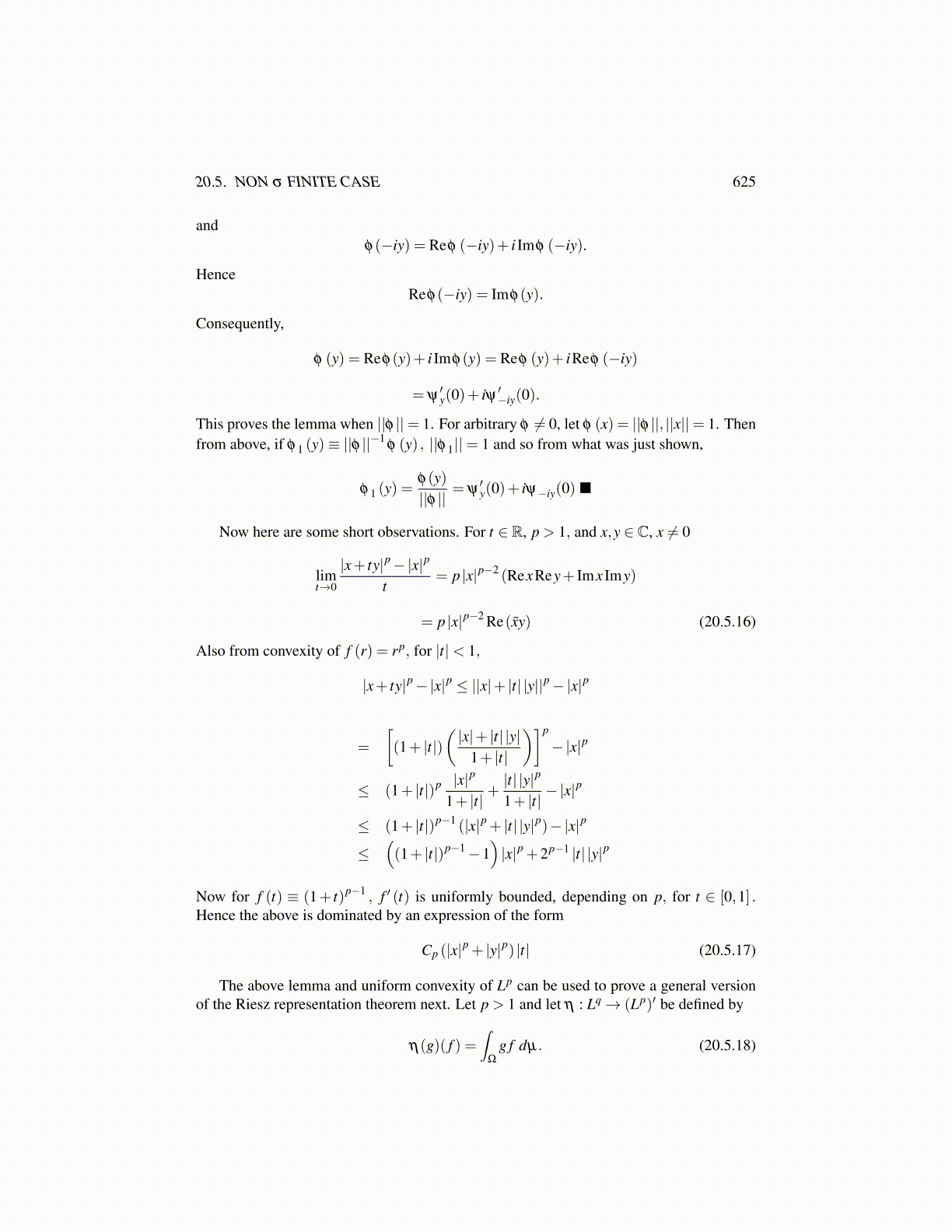
20.5. NON σ FINITE CASE 625
andφ(−iy) = Reφ (−iy)+ i Imφ (−iy).
HenceReφ(−iy) = Imφ(y).
Consequently,
φ (y) = Reφ(y)+ i Imφ(y) = Reφ (y)+ iReφ (−iy)
= ψ′y(0)+ iψ ′−iy(0).
This proves the lemma when ||φ ||= 1. For arbitrary φ ̸= 0, let φ (x) = ||φ ||, ||x||= 1. Thenfrom above, if φ 1 (y)≡ ||φ ||
−1φ (y) , ||φ 1||= 1 and so from what was just shown,
φ 1 (y) =φ(y)||φ ||
= ψ′y(0)+ iψ−iy(0)
Now here are some short observations. For t ∈ R, p > 1, and x,y ∈ C, x ̸= 0
limt→0
|x+ ty|p−|x|p
t= p |x|p−2 (RexRey+ Imx Imy)
= p |x|p−2 Re(x̄y) (20.5.16)
Also from convexity of f (r) = rp, for |t|< 1,
|x+ ty|p−|x|p ≤ ||x|+ |t| |y||p−|x|p
=
[(1+ |t|)
(|x|+ |t| |y|
1+ |t|
)]p
−|x|p
≤ (1+ |t|)p |x|p
1+ |t|+|t| |y|p
1+ |t|− |x|p
≤ (1+ |t|)p−1 (|x|p + |t| |y|p)−|x|p
≤((1+ |t|)p−1−1
)|x|p +2p−1 |t| |y|p
Now for f (t) ≡ (1+ t)p−1 , f ′ (t) is uniformly bounded, depending on p, for t ∈ [0,1] .Hence the above is dominated by an expression of the form
Cp (|x|p + |y|p) |t| (20.5.17)
The above lemma and uniform convexity of Lp can be used to prove a general versionof the Riesz representation theorem next. Let p > 1 and let η : Lq→ (Lp)′ be defined by
η(g)( f ) =∫
Ω
g f dµ. (20.5.18)